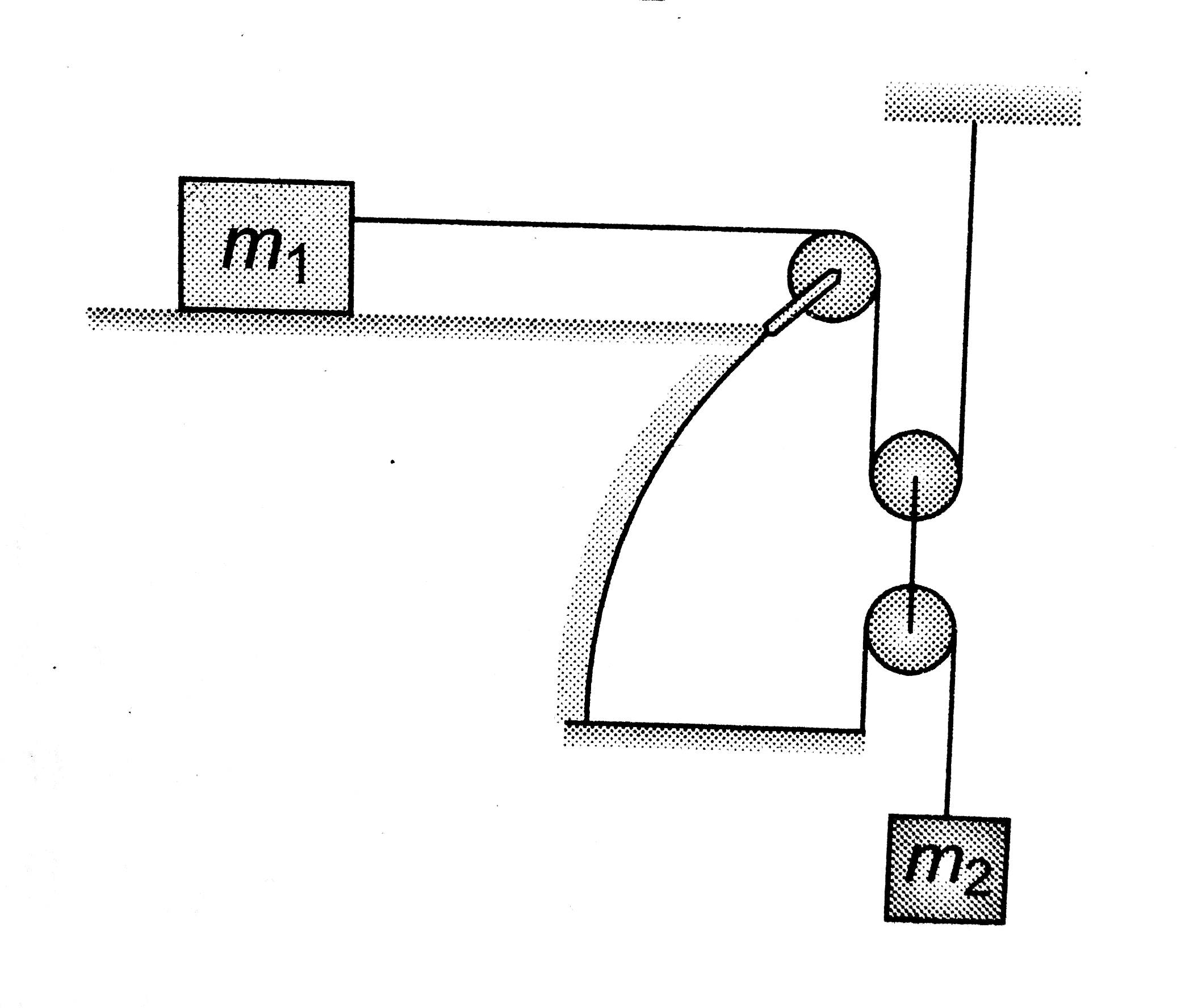
Two blocks are placed at rest on a smooth fixed inclined place. A force F acts on block of mass m1 and is parallel to the inclined plane as shown in figure. Both blocks move up the incline. Then
(i) Draw free body diagram blocks of mass m1 and blocks mass m2
(ii) Find acceleration of blocks of mass m1 and blocks mass m2
(iii) Find normal reaction between the blocks of mass m1 and m2

(i) Let f be the normal reaction between the blocks.
FBD of mass m1
FBD of mass m2
(ii) From FBD of mass m1:
F−(m1gsinθ+f)=m1a
From FBD of mass m2
f−m2gsinθ=m2a
Adding the equations (i) and (ii):
(m1+m2)a=F−(m1+m2)gsinθ
a=F−(m2+m2)gsinθ(m1+m2)
(iii) From equation (2)
f=m2a+m2gsinθ
f=m2[F−(m1+m2)gsinθ(m1+m2)]+m2gsinθ
f=m2[F−(m1+m2)gsinθ+(m1+m2)gsinθ(m1+m2)]
f=m2Fm1+m2
Topper's Solved these Questions
- CENGAGE PHYSICS DPPBOOK - CENGAGE PHYSICSCHAPTER - CENGAGE PHYSICS DPPEXERCISE - single correct type
14 Videos
- CAPACITOR AND CAPACITANCEBOOK - CENGAGE PHYSICSCHAPTER - CAPACITOR AND CAPACITANCEEXERCISE - Integer
5 Videos
- CENTRE OF MASS CONVERSATION OF MOMENTUM AND COLLISIONBOOK - CENGAGE PHYSICSCHAPTER - CENTRE OF MASS CONVERSATION OF MOMENTUM AND COLLISIONEXERCISE - Question Bank
38 Videos
Similar Questions
Knowledge Check
Three blocks are placed at rest on a smooth inclined plane with force acting on m1 parallel to the inclined plane. Find the contact force between m2 and m3
 A(m1+m2+m3)Fm3Bm3Fm1+m2+m3CF−(m1+m2)gDNone of the above
A(m1+m2+m3)Fm3Bm3Fm1+m2+m3CF−(m1+m2)gDNone of the aboveThree blocks are placed at rest on a smooth inclined plane with force acting on m1 parallel to the inclined plane. Find the contact force between m2 and m3
 A(m1+m2+m3)Fm3Bm3Fm1+m2+m3CF−(m1+m2)gDF
A(m1+m2+m3)Fm3Bm3Fm1+m2+m3CF−(m1+m2)gDFA horizontal force acting on a block of mass m which is placed on an inclined plane (as shown in the figure). What is the normal reaction N on the block?
 Amgsinθ+FcosθBmgcosθ−FsinθCmgcosθ+FsinθDmgsinθ−Fcosθ
Amgsinθ+FcosθBmgcosθ−FsinθCmgcosθ+FsinθDmgsinθ−Fcosθ
Figure shows a block of mass 2m sliding on a block of mass m. Find the acceleration of each block . ( All surface are smooth )

View Solution
Two blocks of masses m1 and m2 are connected as shown in the figure. The acceleration of the block m2 is :
View SolutionTwo block of masses m1 and m2 are connected as shown in the figure. The acceleration of the block m2 is:

View SolutionWeight mg of a block is a force acting downward toward centre of the earth. A block of mass 1kg is placed on an inclined plane as shown in figure. Find the x-component and y-component of weight of the block are

View SolutionA body of mass 1kg lies on smooth inclined plane. The block of mass m is given force F=10 N horizontally as shown. The magnitude of net normal reaction on the block is:

View Solution


